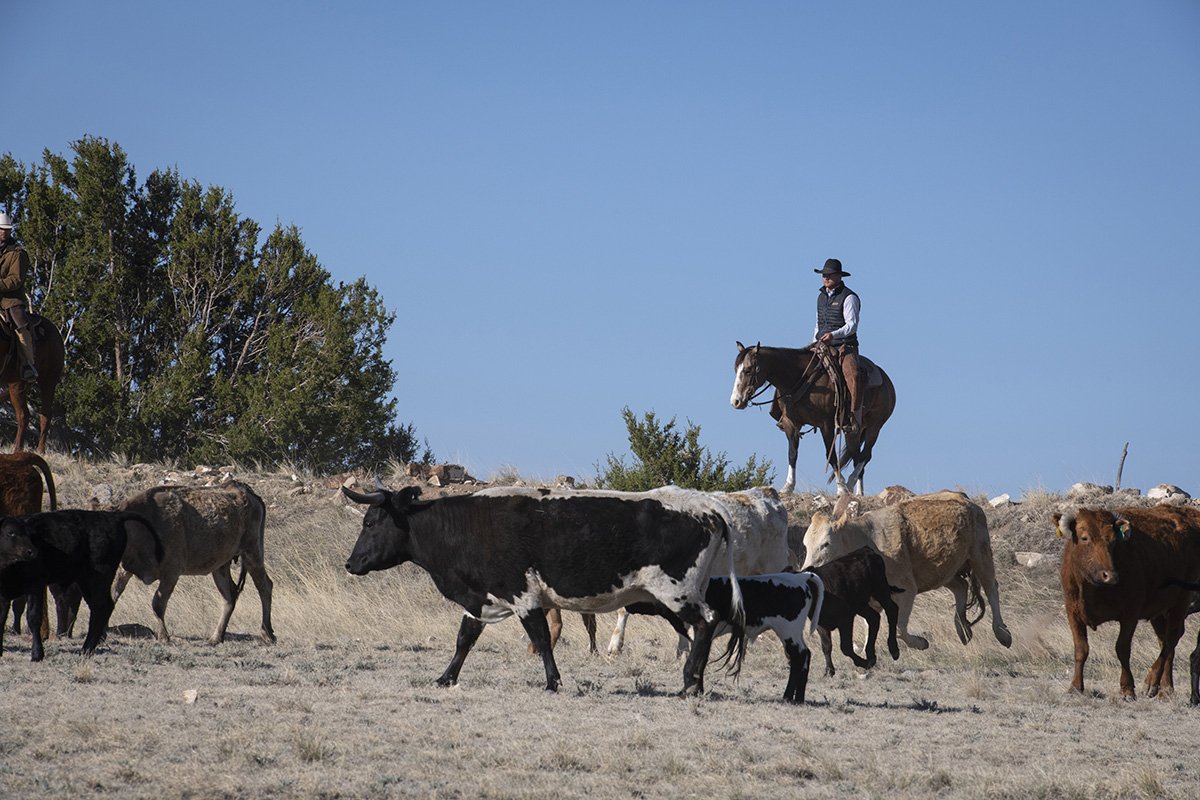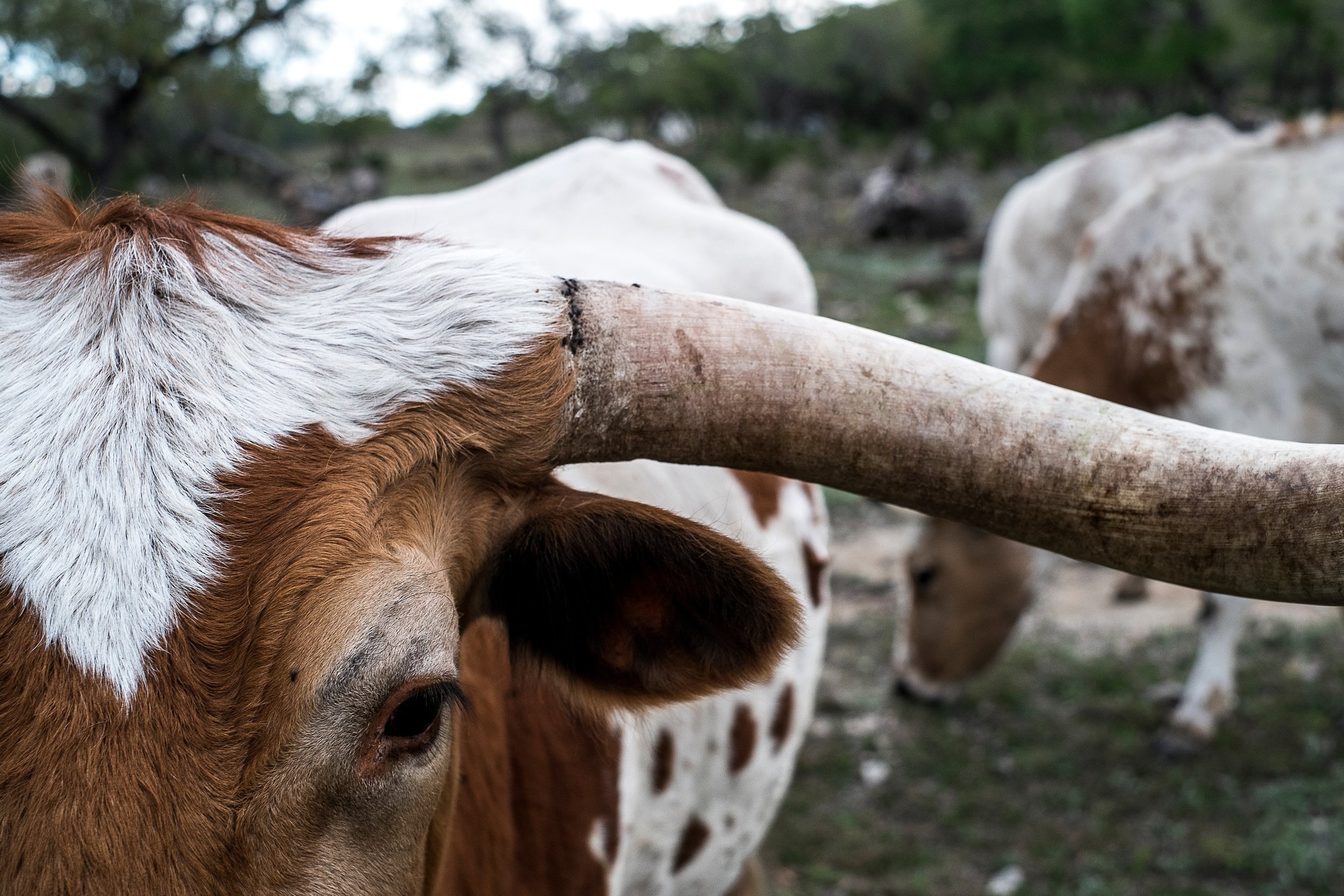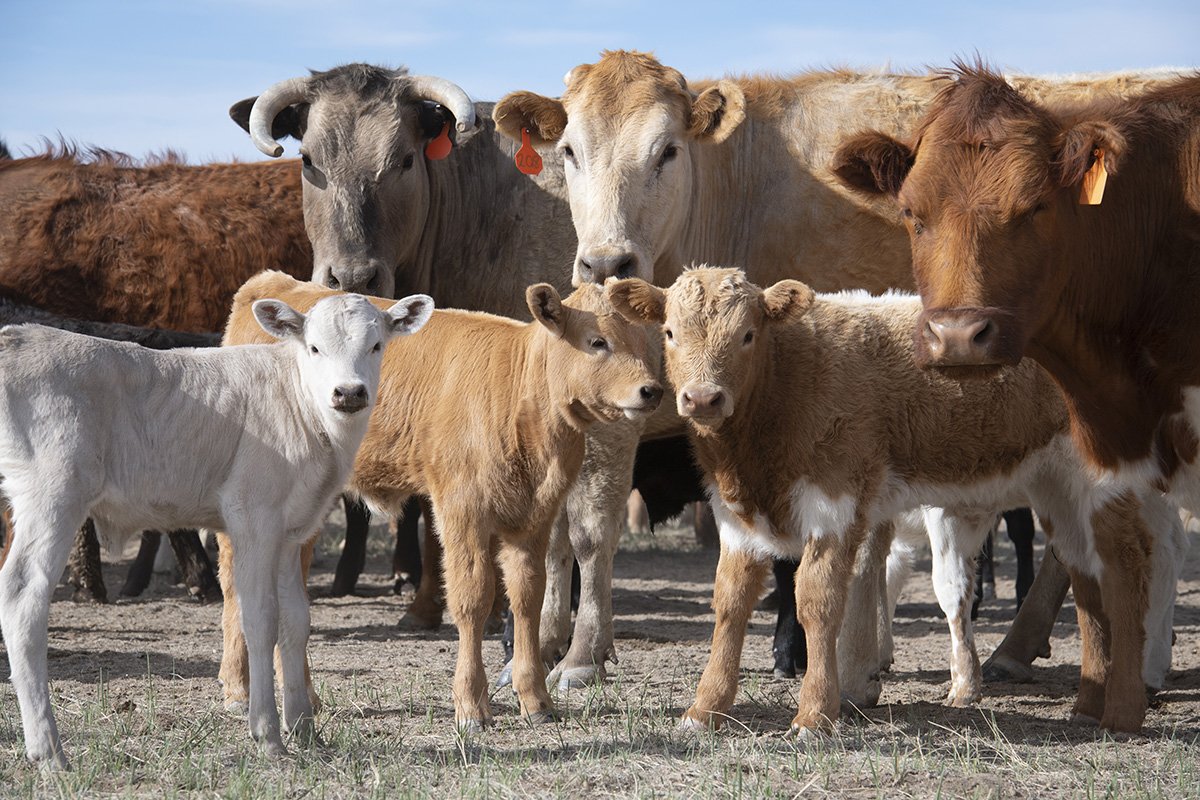
RANCHO LARGO CATTLE CO.
Our beef drives ecological health. Here’s why.
A linear paradigm assumes that actions happen in isolation. Linear thinking leads to bad outcomes in natural systems. For instance, a linear management strategy like,
“running more cattle makes more money”
may work until the system crashes from lack of plants.
A holistic paradigm assumes that every action - by microbe, plant, animal, or human - cycles through a natural system.

A HOLISTIC
STRATEGY LIKE
“cattle need to graze in ways that maximize nutrient cycling”
leads to healthy land, healthy people, and long term economic stability.
Unfortunately, our society has taken a linear approach to human nutrition and environmental health. Linear thinking labels pieces as “good” or “bad”; labels that don’t apply in natural systems.

The linear Economy
Linear thinking disconnects soil life, Plants, cows, and humans.
Plants Are Good
They remove CO2 from the atmosphere
Cows Are Bad
They burp methane into the atmosphere and eat “good” plants

Humans Are Bad
They want or need to eat cows for protein. This demand perpetuates the “bad” cattle industry.

EVERYTHING IS CONNECTED.
There are no “good” or “bad” pieces.
There are only interactions within a greater system.


Plants
TALK TO INSECTS
TRADE WITH INSECTS
TRADE WITH THE SOIL
INVEST IN THE SOIL
EAT BACTERIA
PROVIDE HOUSING

Plants talk to insects by producing hormones that attract predator insects when herbivore insects attack. They then trade with the predator insects by feeding them sap. Plants trade with soil microbes through their root exudates. Plants release sugars (microbe food) in exchange for nutrients (Ca, Mg, P, N, Mn, B etc.). Healthy plants invest by cultivating diverse microbes so they can signal what nutrients they need. Plants also eat bacteria through their root tips take the nutrients they need and poop out the excess. Finally, plants provide housing for fungi within their roots and stems. The fungi pay rent with nutrients.
Soil
Breathes
Has communities
Has social conflict
Has highways
Has air ducts
1 tsp of soil contains 1 billion microbes
Soil, or rather the microbes and predators in soil, breath in oxygen and exhale CO2 like most living things. Healthy tall grass prairie soils can exhale 7.5 tons of CO2 per acre per year. Soil communities are most active near root tips. Bacteria build small houses and fungi build large storage sheds. Social conflict is critical to nutrient cycling. Predators raid the houses and storage sheds which makes nutrients available for plants. Fungi build highways that can transport nutrients for miles. The air ducts created by roots, houses, and storage sheds are critical to store water, bring in Oxygen, and exhale CO2.
Cows
Manufacture protein
Recycle raw materials
Redistribute wealth
Rebuild microbe cities
Force plants to to feed microbes
Charge for their services
Savor diversity

Humans cannot digest most grassland plant fiber but cattle turn that fiber into human digestible proteins. The manure waste from protein production is nutrient rich microbe food and insect shelter. Cattle constantly redistribute nutrients and microbes in the landscape through cow pies, urine patches and drops of saliva. Cattle force plants to feed microbes since defoliation is a trigger for plants to exude sugars. Cattle feed fungi when they trample dead plants, and bacteria when they trample live plants to the soil surface. Through diet selection and disturbance cattle keep succession active and improve plant diversity. They charge about 10% of what they eat for their services. That plant diversity is a key to the nutrient density in our beef.
If plants can call friends for help, repel their enemies, trade goods, invest in the future, charge rent to tenants, and eat the foods of their choice, are they sentient beings? Is it cruel to kill and eat them?
If the soil breathes, creates communities, has social conflict, and transports goods, is it alive? If the soil exhales CO2, at rates as high as 7.5 tons per acre per year, should we do away with soil?
If cows keep grassland ecosystems diverse, recycle nutrients, and create nutrient dense food from fiber that humans can’t eat, should we do away with them?
Why should you care?
Here’s Why
The soil is nature’s carbon bank. In the last 125 years we have made a huge withdrawal from that bank.
25-35% of the carbon added to the atmosphere by humans came from the soil.
The plow has put 50-70% of the carbon from grassland soils in the atmosphere.
Long term savings only happens in thriving economies. A thriving economy on grasslands requires diversity; microbes, plants, insects, and animals all play vital roles. Linear thinking about carbon would take ruminants (cattle or bison) out of the system because they burp greenhouse gases.
Holistic thinking works toward a thriving economy, with all components, that will allow nature to put carbon back in the bank.
Make your contribution to the holistic economy.















